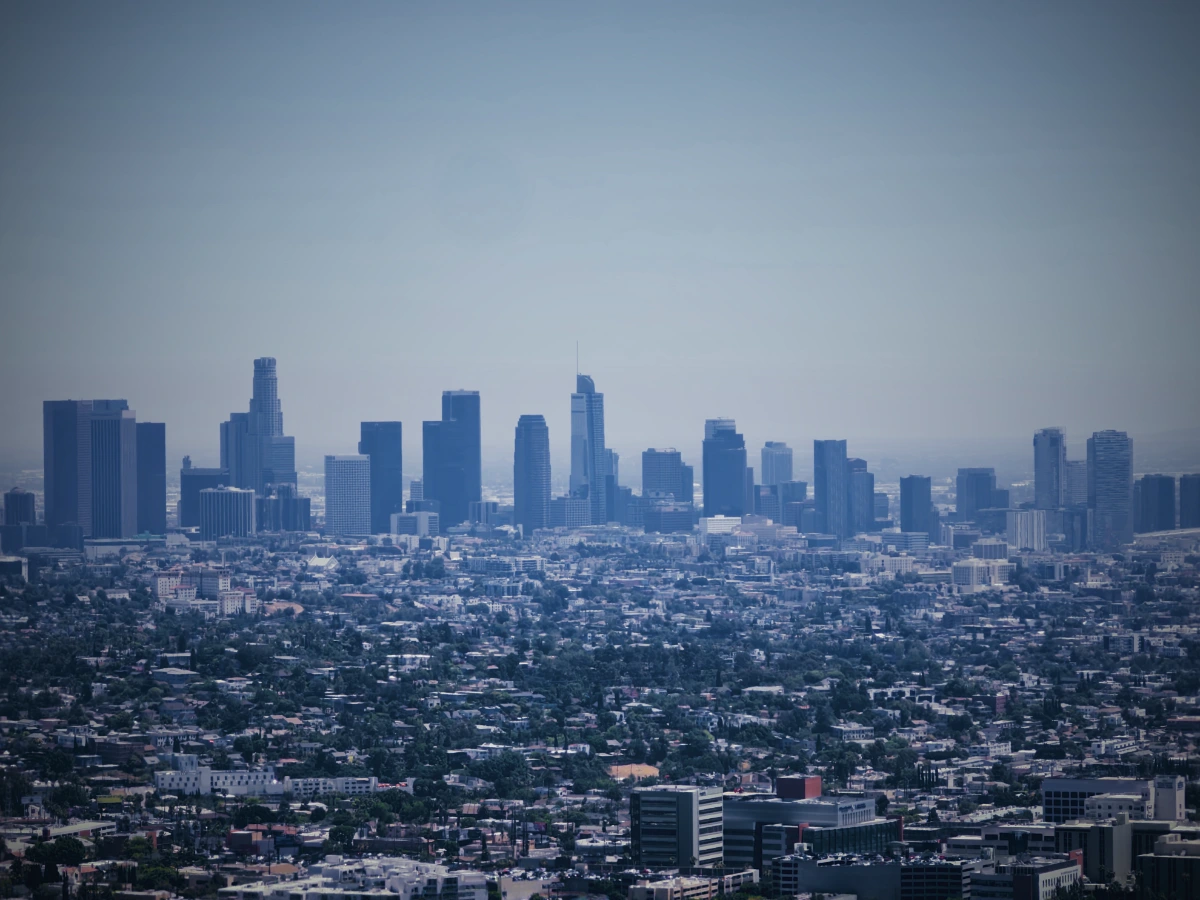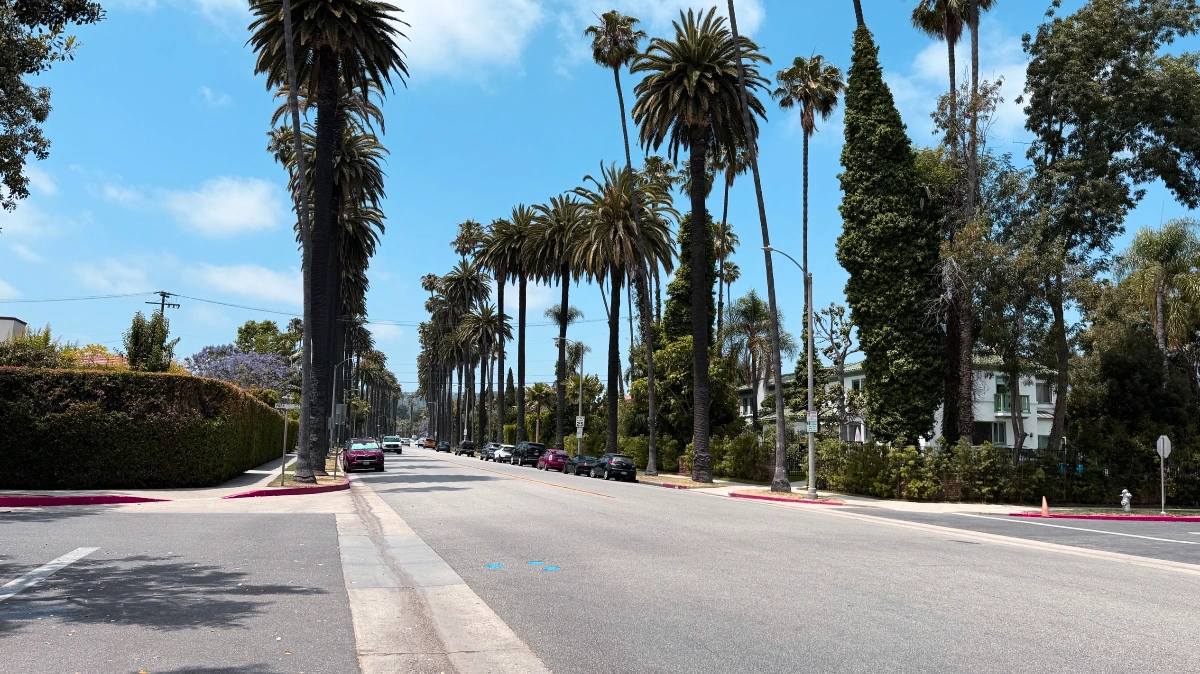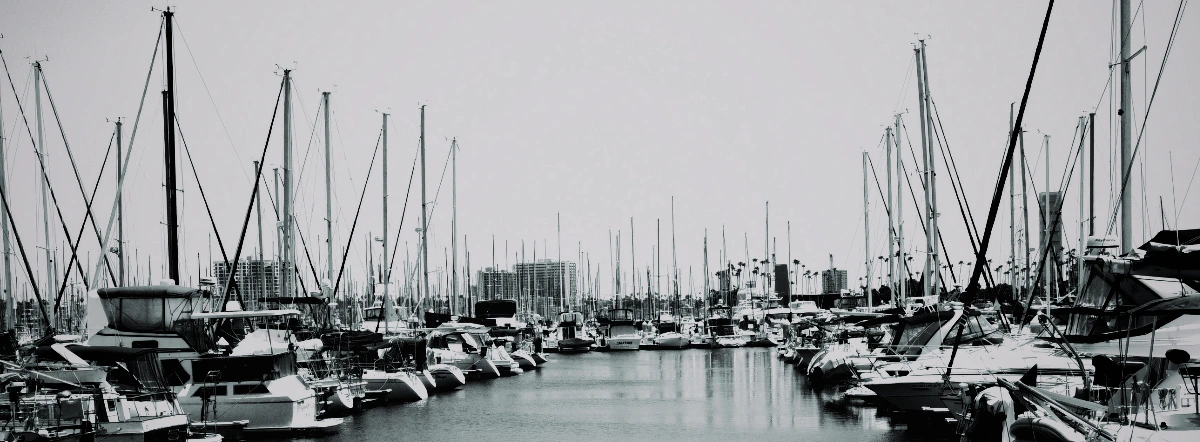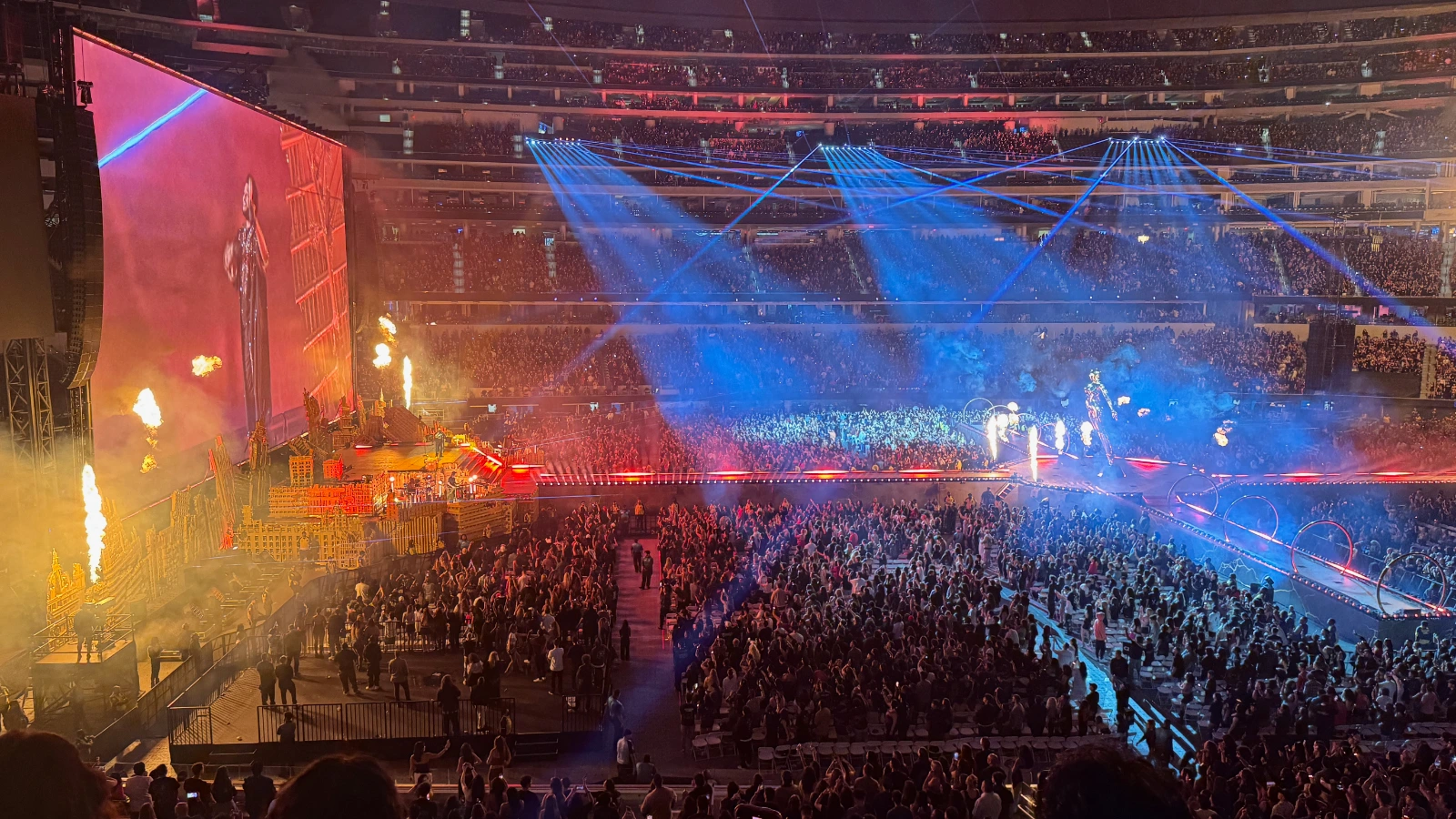Your Insider’s Guide to Experiencing LA Like a Local
Forget what you’ve heard. LA can be affordable if you know where to look.
Most people think visiting Los Angeles means choosing between broke or basic. Either you blow thousands on overpriced tourist nonsense, or you skip the city entirely because “it’s too expensive.”
Both options suck.
The real LA exists in the gaps between Hollywood Boulevard and Rodeo Drive. It’s where actual Angelenos live, eat, and hang out. And here’s the secret: that version of LA costs way less than the glossy Instagram version while being infinitely more interesting.
I’m about to show you how to experience the real city without the financial hangover.

The Accommodation Strategy Nobody Tells You
Here’s what travel blogs won’t say: LA hotels play pricing games. The same room swings $100+ depending on when you book and what day you’re checking in.
Your move? Think like a local, not a tourist.
Skip the airport hotels entirely. They’re convenient for exactly nobody except business travelers with expense accounts. Instead, plant yourself in neighborhoods where things actually happen. Downtown LA has transformed over the last decade from sketchy to legit interesting, with spots like Freehand offering everything from shared bunks around $50 to private rooms under $160. The rooftop bar alone justifies the stay.
Venice gets expensive fast, but The Kinney punches above its weight class. You’re paying $150 to $180 for a spot walking distance from the boardwalk chaos, Abbot Kinney’s boutiques, and some legitimately good coffee shops that tourists never find. Book Tuesday through Thursday and watch those rates drop even further.
Here’s a pro move most people miss: Bel Air sounds fancy and untouchable, right? Luxe Sunset Boulevard sits in that neighborhood charging around $200 per night. You get boutique hotel vibes, easy access to The Getty and UCLA area, and none of the Beverly Hills markup. It’s quiet enough to actually sleep but close enough to everything that matters.
The real trick? Book 8 to 10 weeks out, avoid weekends when possible, and never touch anything within two miles of LAX unless you enjoy paying extra for convenience you don’t actually need.
Free Stuff That Doesn’t Suck
LA’s best experiences cost nothing. I’m not talking about walking past celebrity homes or staring at handprints on Hollywood Boulevard (both terrible). I’m talking about actual experiences that residents genuinely enjoy.
Griffith Observatory on a weekday morning: Show up when it opens. You’ll have the place mostly to yourself, the trails around Griffith Park are empty, and the views over LA look cinematic without the weekend crowds ruining your photos. The observatory itself is free. The planetarium shows cost a few bucks but skip them and just enjoy the building and the science exhibits.
The Getty Center: Free admission, world class art, architecture that feels like a temple, and gardens that could be their own destination. You pay $20 for parking, but carpool or rideshare and split it. The collection includes Van Gogh, Monet, and Rembrandt. Most major cities charge $25 per person for museums half this good.
Downtown’s Arts District: This neighborhood got gentrified by artists before getting gentrified by developers, so it retains actual character. Massive murals cover entire buildings. Galleries pop up in converted warehouses. Coffee shops double as art spaces. Just walk around and you’ll stumble into stuff that would cost money anywhere else. The Broad Museum sits nearby offering free admission (reserve online), and Grand Park connects everything together.
Beach life beyond Santa Monica: Everyone hits Santa Monica Pier because that’s what guide books say to do. The pier is fine. Crowded and touristy, but fine. Drive 20 minutes up PCH to El Matador Beach instead. Dramatic rock formations, caves at low tide, and way fewer people treating the beach like Disneyland. Parking costs maybe $10, and you get one of California’s most photographed coastlines basically to yourself on weekday mornings.
The Last Bookstore: This spot downtown turned an old bank into a labyrinth of books, vinyl, and architectural weirdness. The upstairs book tunnels and dollar vinyl bins make it worth visiting even if you’re not buying anything. It photographs well and kills an hour easily.
Runyon Canyon if you go early: This Hollywood Hills hiking spot gets absolutely mobbed by 10am. Show up at 7am and you’ll beat the Instagram crowd. Dogs run off-leash, the views span from downtown to the ocean, and it’s genuinely good exercise. Just don’t expect solitude after sunrise.
Venice Canals: Tourists hit the Venice boardwalk (which is worth seeing for the chaos alone), but most miss the actual Venice Canals a few blocks inland. These quiet residential walkways look like someone dropped a piece of Italy into Southern California. It’s peaceful, pretty, and costs nothing to wander through.

Museums and Culture Without the Markup
The Getty Villa in Malibu (also free, also requires parking payment) focuses on ancient Greek and Roman art. The building recreates a Roman country house, and the Pacific Ocean views add drama you don’t get at most museums.
LACMA (Los Angeles County Museum of Art) isn’t free, but they offer reduced admission after 3pm and free entry for LA County residents. Even if you’re visiting, the Urban Light installation out front (those iconic lamp posts) is accessible 24/7 for photos without paying admission.
The Museum of Jurassic Technology in Culver City costs around $10 and defies easy description. Part natural history museum, part art installation, part elaborate joke. You won’t know what’s real and what’s invented, and that ambiguity is the entire point. It’s one of the weirdest things you’ll see in LA, which is saying something in a city full of weird things.

Transportation: The Real Story
LA’s public transit gets trashed constantly, and honestly, most of that criticism is fair. But here’s the thing: tourists and locals use transportation differently.
You don’t need to navigate the entire city by bus. You need to get between major clusters without spending $50 per day on Ubers. The Metro works perfectly for that limited scope.
The Expo Line runs from downtown to Santa Monica. One day pass costs $5. That same trip via rideshare costs $30 each way during surge pricing. Download the Metro app, buy a TAP card at any station, and suddenly you’re saving $50+ per day just on beach runs.
That said, some destinations require wheels. Malibu, Pasadena, and most hiking trailheads don’t connect to transit. Rent a car for specific days when you need it rather than the entire trip. Compare daily rental costs against rideshare expenses and parking fees at your hotel. Sometimes renting makes sense, sometimes it doesn’t.
Here’s something most visitors screw up: they underestimate LA distances. That museum looks close on the map? It’s 45 minutes away. Plan your days by neighborhood clustering. Hit everything in Downtown on one day, Santa Monica and Venice on another, Hollywood and Griffith Park on a third. Bouncing around the city wastes time and money.
If you’re tracking your trip like you’re building your second brain, organize by geography first, then by interest. You’ll thank yourself later.
Food: Where Locals Actually Eat
Tourist restaurants charge inflated prices for mediocre food. Local spots charge reasonable prices for food that actually tastes good. The hard part is knowing which is which.
Strip malls are your friend. I know that sounds insane, but LA’s best food hides in ugly locations. Thai Town, Koreatown, and the San Gabriel Valley pack world-class restaurants into shopping centers you’d drive past without noticing.
Grand Central Market downtown gives you a crash course in LA’s food diversity under one roof. It’s been there since 1917, so it has history and authenticity that food halls opened last year can’t fake. Grab pupusas from Sarita’s, tacos from Villa Moreliana, or ramen from Ramen Hood. Everything runs $8 to $15, and you’re eating better than people spending triple at restaurants nearby.
Korean BBQ in Koreatown offers the best value in the city. All-you-can-eat spots charge $25 to $30 per person and bring unlimited meat, banchan (side dishes), and rice. Go with friends, make it social, and you’ll leave absolutely stuffed. Quarters BBQ and Kang Ho Dong Baekjeong both deliver solid experiences without requiring reservations weeks in advance.
Mexican food in LA is legitimately world class because LA has massive Mexican and Central American communities. Any taco truck (lonchera) parked near a construction site or in a neighborhood probably serves better tacos than sit-down restaurants charging three times as much. Mariscos Jalisco in Boyle Heights does shrimp tacos that people drive across the city for. Leo’s Tacos in East LA operates multiple trucks serving al pastor until 4am. Both cost under $10 per person.
If you want sit-down vibes without tourist pricing, Highland Park and Silver Lake pack incredible restaurants into walkable neighborhoods. Cafe Birdie, All Time, and Kitchen Mouse all serve creative California food at prices that won’t wreck your budget. Make a reservation, but you’re looking at $20 to $35 per person instead of $75+.
Happy hour deserves its own paragraph. Tons of upscale spots in West Hollywood, Arts District, and downtown drop appetizer and drink prices between 4pm and 7pm. You can try places you couldn’t afford otherwise. Some spots cut menu prices in half. Check restaurant websites or call ahead to confirm happy hour times and menus.

Spots That Separate Tourists from Travelers
Olvera Street claims to be LA’s birthplace, and historically that’s accurate. Today it’s a Mexican marketplace with colorful buildings, street vendors, mariachi bands, and restaurants serving traditional Mexican food. It’s touristy in the way that Pike Place Market in Seattle is touristy, meaning locals still show up because the food and atmosphere are genuinely good. It costs nothing to walk through, and the energy feels more authentic than most “cultural experiences” that charge admission.
The Self-Realization Fellowship Lake Shrine in Pacific Palisades offers something rare in LA: actual quiet. This spiritual sanctuary has gardens, a spring-fed lake, and a Gandhi memorial. It’s not trying to convert you to anything. It’s just peaceful and open to everyone for free. Go there when you need a break from the chaos.
Point Duma in Malibu delivers sunset views that rival anything you’ll see in California. There’s a parking fee (around $10), but once you’re there, you can watch surfers, explore tide pools at low tide, and see colors that don’t look real. The drive up PCH feels like a postcard. Go on a weekday late afternoon and you might share the beach with only a dozen other people.
The Huntington Library in Pasadena technically costs $25 to $29 for admission, which might seem steep until you see what you’re getting. The botanical gardens alone span 120 acres with Chinese, Japanese, and desert gardens that each could be standalone attractions. The art collection includes rare books and manuscripts. The tea room serves afternoon tea if you want to splurge. First Thursday of every month is free admission, but you need to reserve tickets weeks in advance because half of LA has the same idea.
For genuine weird LA, check out the Museum of Jurassic Technology in Culver City. Around $10 gets you into what might be a museum or might be an elaborate conceptual art piece. You’ll see exhibits about things that may or may not be real. The ambiguity is intentional and kind of brilliant. It’s one of those places that sticks in your memory long after you forget which celebrity homes you drove past.

Hiking Beyond the Obvious
Everyone knows about Runyon Canyon and Griffith Park. Here are trails that don’t show up in every travel blog:
Temescal Canyon in Pacific Palisades: This loop trail takes you from the coast up into the Santa Monica Mountains with ocean views the whole way. It’s moderately challenging, around 4 miles, and connects to other trails if you want to extend it. The trailhead parking costs $12, but you can street park nearby for free if you’re willing to walk a bit.
Eaton Canyon in Pasadena: The main trail leads to a 40-foot waterfall. It gets crowded on weekends but stays manageable on weekdays. The hike is easy enough for families, around 3.5 miles roundtrip, and free parking at the nature center. After heavy rain, the waterfall actually flows instead of trickling, so time it right and you’ll see something impressive.
Solstice Canyon in Malibu: Multiple trails wind through this canyon, passing waterfalls, ruins of old estates, and enough shade to hike even during summer afternoons. It’s less known than other Malibu hikes, meaning fewer people blocking the trail for Instagram photos. Parking is free.
Timing Your Visit for Maximum Savings
LA prices fluctuate wildly based on when you visit. January through March (except holiday weekends) offers the sweet spot: mild weather, fewer tourists, and hotel rates that drop 30% to 50% from peak summer prices. You might need a light jacket in the evening, but daytime temperatures still hit 65 to 75 degrees while the rest of the country deals with winter.
September and October work great too. Summer crowds thin out, but the weather stays warm. Beach water temperature actually peaks in September because the ocean takes months to warm up.
Avoid these periods unless you enjoy paying extra: anything around awards season (January through March can spike during specific weekends), summer (June through August), and major holidays. Beach parking alone can cost $30 on a summer Saturday, while the same spot costs $10 on a Tuesday in October.
Hacks That Actually Work
SpotHero and similar parking apps save ridiculous amounts of money. Downtown LA parking can hit $40 for event parking. SpotHero finds garages charging $15 for the same time period. Book ahead, show your phone confirmation, and you’ve saved enough for lunch.
Street parking in most LA neighborhoods meters out until 8pm Monday through Saturday. If you’re eating dinner at 6pm, time your arrival for 7:45pm and save $3 to $5 in meter fees. Small wins add up over a week.
Museum memberships sometimes make financial sense even for short trips. If you’re planning to hit multiple museums, check if any offer reciprocal membership benefits. Some museums belong to networks that give members free or discounted admission to dozens of other institutions.
The Metro app lets you buy day passes and plan routes without talking to anyone or figuring out fare machines. Download it before you arrive, load a pass, and you’re set. One day pass covers unlimited rides for $5. Do the math on what that saves versus rideshares.
Coffee shop WiFi is plentiful and free. If you’re working remotely or planning your day, spots like Intelligentsia, Blue Bottle, and Verve offer strong internet and don’t chase you out after an hour. Buy a coffee, post up, and take advantage of the space.
Like mastering iPad productivity shortcuts to work more efficiently, knowing these LA hacks means you spend less time figuring stuff out and more time actually enjoying your trip.
Day Trips When You Need an Escape
LA gets intense. Sometimes you need to leave the city without going too far.
Joshua Tree National Park sits two and a half hours east. Park admission costs $30 per vehicle and covers everyone in your car for seven days. The landscape looks alien: massive boulder formations, twisted Joshua trees, and silence you don’t find in LA. Camp overnight if you’re into that (campsites run $15 to $30), or just go for the day. The stargazing after sunset rivals anything you’ll see in the continental US, and night sky photography opportunities are incredible if you’re into that.
Angeles National Forest sprawls just 45 minutes north of downtown. Dozens of hiking trails lead to waterfalls, mountain peaks, and views over the LA basin. Most trailheads charge $5 for parking or accept an America the Beautiful pass if you have one. Pack a lunch, spend the day hiking, and you’ve escaped the city for under $10 per person.
Laguna Beach (90 minutes south) offers gorgeous cliffs, tide pools, art galleries, and a walkable downtown that feels more manageable than LA. Beach access is free. Parking costs vary but expect $10 to $20 depending on location and day. Pack food and drinks to avoid overpriced beachside restaurants.
Catalina Island requires a ferry from Long Beach or San Pedro (around $75 roundtrip), but once you’re there, walking around Avalon costs nothing. Rent a bike for $30 and explore the island’s interior, or just beach it. The island feels like a different world even though it’s only an hour offshore. Go midweek if possible because weekend ferries pack out and hotel prices spike.
Want to see what Catalina actually looks like? Peter Santenello takes you on a video tour and breaks down the real experience:
Santa Barbara sits about 90 minutes north up Highway 101. The drive itself is scenic, following the coast most of the way. The town has Spanish colonial architecture, wine tasting rooms, beaches, and a funkier downtown than you’d expect. It’s a day trip if you’re ambitious or an overnight if you want to slow down.
The Mindset Shift That Changes Everything
LA punishes tourists and rewards locals. Not because the city is mean, but because tourist infrastructure is designed to extract maximum money from people who don’t know any better.
The shift happens when you stop asking “what should I see in LA?” and start asking “how do people who actually live here experience this city?”
That means eating where line cooks eat on their days off. It means hitting beaches at times when working people can actually go. It means understanding that the best parts of LA aren’t usually packaged as attractions.
Talk to people. Bartenders at neighborhood spots know more about their area than any travel blog. Baristas at independent coffee shops can point you toward stuff that never makes it online. Uber and Lyft drivers navigate the city all day and have opinions about which neighborhoods are worth your time.
LA rewards curiosity more than planning. Yes, you need a rough itinerary so you’re not wandering randomly. But leave space for random discoveries, because that taco truck you stumbled on or that street art alley you found by accident often becomes your best memory.
Why This Approach Works
Budget travel gets framed as sacrifice. Cheap hotels, boring food, skipping experiences because they cost money. That’s the wrong way to think about it.
Smart travel is about maximizing value, not minimizing cost. A $12 meal from a lonchera that blows your mind delivers more value than a $45 meal at a tourist trap that you forget by the next day. A free hike with ocean views beats a paid bus tour pointing out celebrity homes you can’t even see.
LA makes this approach easier than most cities because the tourist version and the local version operate almost independently. You can spend a week in LA without ever intersecting with tourist traps if you know where to go.
The diversity helps too. Whatever you’re into, LA has multiple neighborhoods serving that interest at different price points. Into food? Pick literally any cuisine and LA has it at street food prices and fine dining prices and everything between. Into art? Free museums, cheap galleries, and street art everywhere. Into outdoors? Ocean, mountains, and desert within a two-hour drive.
Your LA Blueprint
Start in one neighborhood and radiate outward. Most people try to see everything in five days and end up seeing nothing deeply. Pick Venice and really explore it. Then do the same with Downtown. Or Koreatown. Or Silver Lake.
Book accommodations early in neighborhoods where you actually want to spend time, not near airports or highways. Use public transit for major moves between neighborhoods and rideshares for late night or awkward destinations.
Cluster activities geographically using a simple system, whether that’s a notes app or building your whole travel system like a second brain. Monday is Downtown and Arts District. Tuesday is Santa Monica and Venice. Wednesday is Griffith Park and Los Feliz. You get the idea.
Eat one proper meal per day at a place locals recommend and fill the rest with cheap street food, market finds, and grocery store runs. Save alcohol spending for happy hours when prices drop 50%.
Leave one day completely unplanned. Wander. Get lost. Find something that isn’t on any list. That day usually ends up being your favorite.
The Real Secret
LA’s reputation for being expensive comes from people doing what travel guides tell them to do. Hollywood Boulevard, Beverly Hills, trendy restaurants with two-month wait lists. That version of LA is expensive because it’s designed to be.
The version of LA where people actually live costs a fraction of tourist LA and offers experiences that feel authentic instead of performed. You don’t need insider connections or secret knowledge. You just need to look past the obvious stuff and talk to people who live here.
The weather alone justifies the trip. 280 days of sunshine, comfortable temperatures year-round, and ocean breezes that make even summer heat bearable. Add beaches, mountains, world-class food, and enough cultural diversity to keep things interesting for months, and LA starts to make sense.
You don’t need a Hollywood salary to enjoy Los Angeles. You need a willingness to explore beyond the guidebook and a recognition that the best experiences usually don’t come with admission fees.
Go to LA. Skip the tourist traps. Eat the street food. Hike the trails. Talk to locals. You’ll have a better time and spend less money than people following conventional advice.
That’s the entire strategy.
